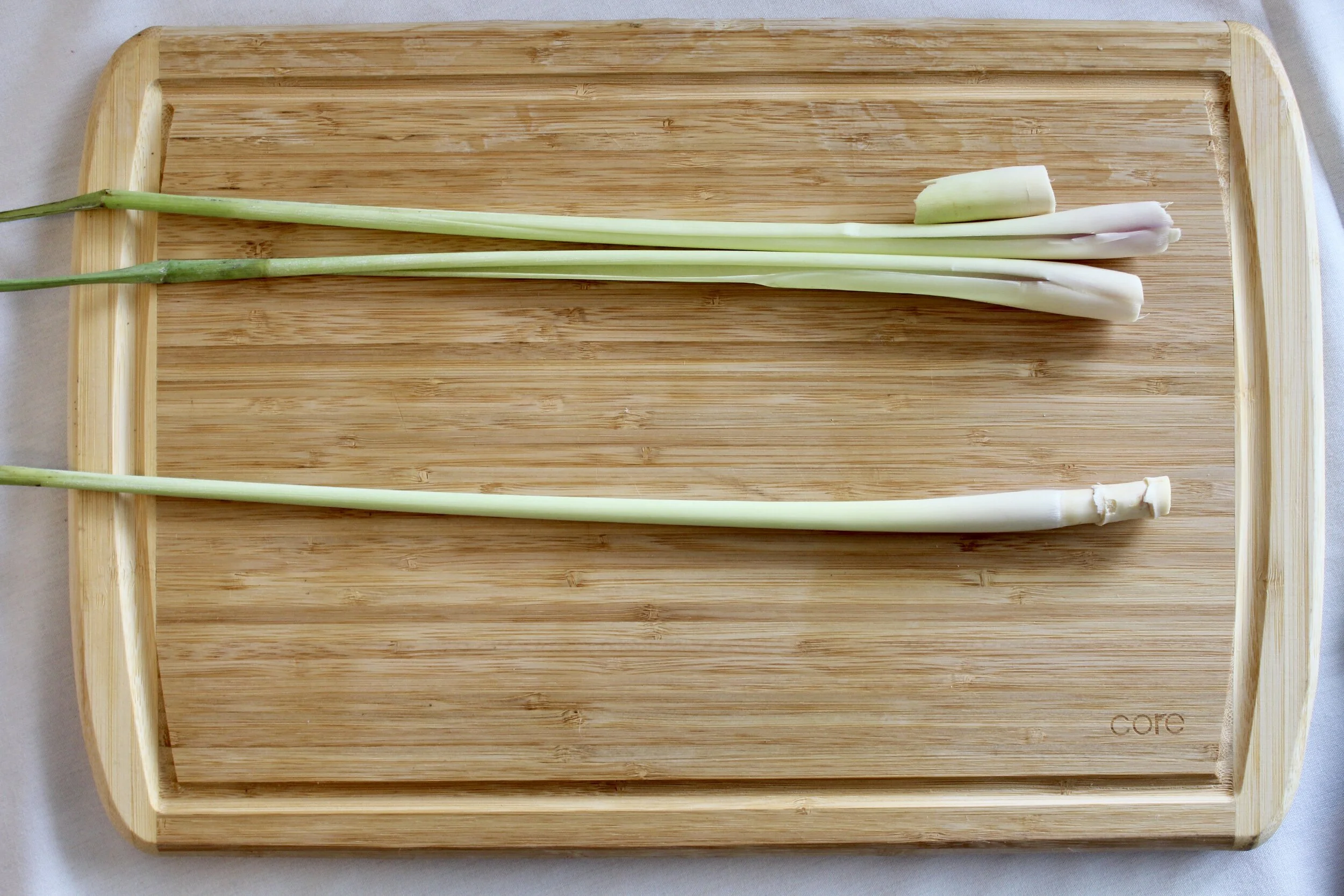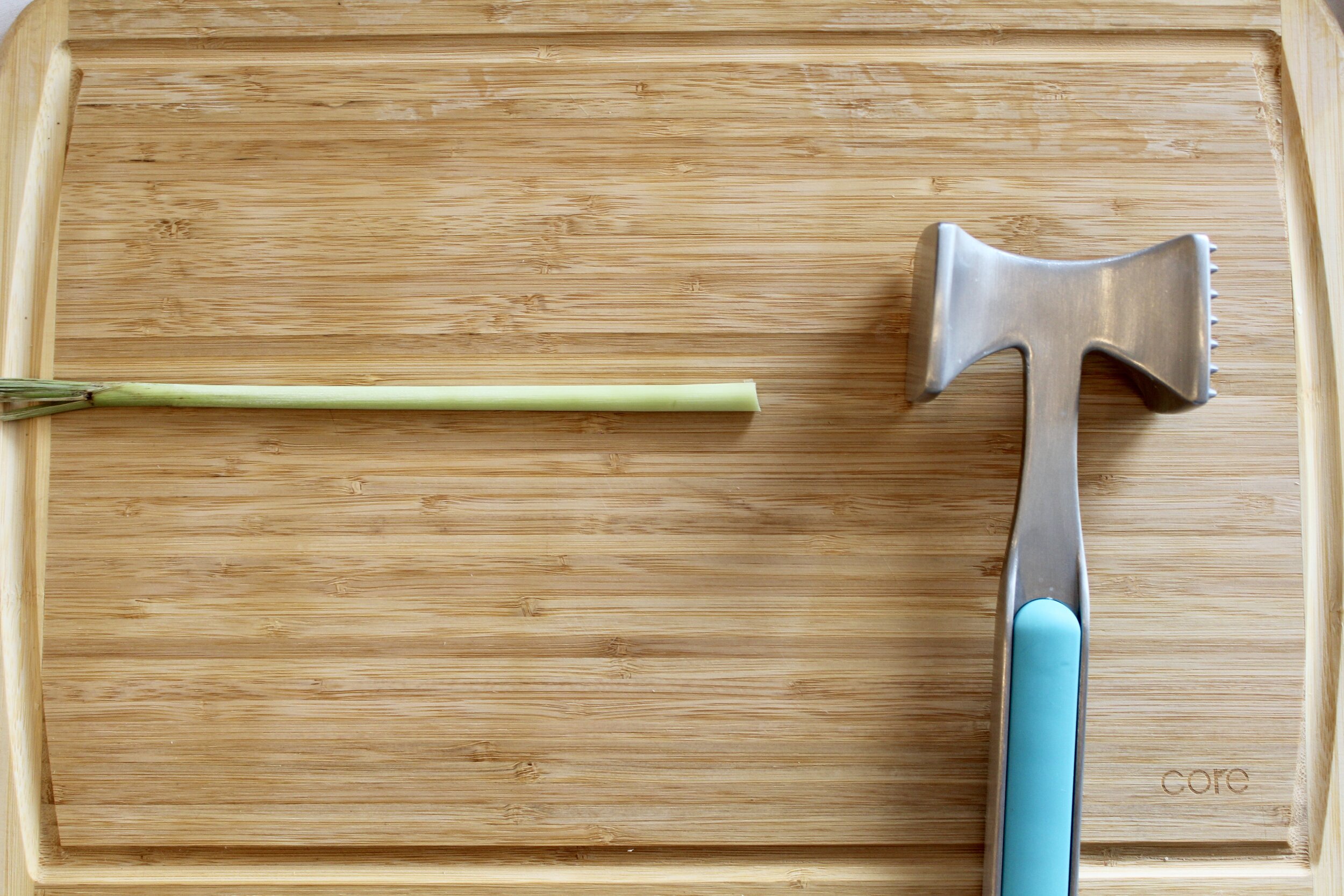A Lemongrass How-To Guide
HOW-TO: Shop for Lemongrass
Lemongrass is fairly common in Asian supermarkets. There are also quite a few Farmers’ Markets that sell Lemongrass as well, so if you can buy from your local Farmers’ Markets, please do so. All Lemongrass pictured in this blog post, if not otherwise noted, are from Yao Cheng Farms, a part of Food Roots’ network of farmers of colors. Shopping at local Farmers’ Markets is a great way to ensure that your produce is fresh, pesticide free, and grown with sustainable practices. As a tropical perennial, Lemongrass can be available throughout most of the year in sunny Southern California, but it is in peak season during the warmer months (late spring and summer).
When shopping for Lemongrass, look and feel for:
Fragrant aroma
Green-yellow color around roots
Firmness and heaviness
Avoid thin stalks with brown/wilted tops
HOW-TO: Store Lemongrass
If you come across a beautiful array of Lemongrass, buy them while they are fresh and freeze the stalks for future use! Follow the preparation instructions below and freeze your cut Lemongrass in a freezer-safe reusable, resealable bag or tupperware.
HOW-TO: Wash and Prep Lemongrass
You bought beautiful and locally-sourced stalks of Lemongrass. Now what? It’s time to prepare them!
First, trim your Lemongrass stalk. Begin by cutting off the bulb at the base, closest to the root end. You can compost this bulb since it is often too woody and fibrous to eat.
Next, remove any tough and fibrous layers. People may sometimes complain that Lemongrass is too tough to chew, but this is often the result of the chef not removing these outer layers.
Whole stalk with outer layers removed
Trimmed bottom stalk with further outer layers removed
Depending on what dish you are making, you can strategically use different parts of the herb. Lemongrass flavor is most concentrated in the bottom third, fleshy area of the stalk, which is closest to the root. Most recipes that call for Lemongrass use this fleshy, edible portion. The woody green tops are too fibrous for human chewing, but you can save them for herbal tea, broth, soup, or curry. You can also freeze the tops for later use. Our instructions below will show you how to use each section in a variety of ways.
Lemongrass bottoms:
Whole/bruised - good for soups and curries
Cut off the top woody greens of the Lemongrass and save for later. Peel away any tough outer layers to expose the soft inner flesh. Pound the Lemongrass with a meat tenderizer, the bottom handle of your knife, a pestle, or any heavy item you have on hand. This better releases the stalk’s aromatic oils. Use this portion like a bay leaf and fish out the cooked Lemongrass before serving your dish.
Rounds - good for stir fries, salads, and marinades
Cut off the top woody greens of the Lemongrass and save for later. Peel away any tough outer layers to expose the soft inner flesh. Thinly slice the tender portion of the Lemongrass to pack in more flavor in your recipes.
Minced - good for marinades
Cut off the top woody greens of the Lemongrass and save for later. Peel away any tough outer layers to expose the soft inner flesh. Pound the tender portion of the Lemongrass, and divide the fibers. Finely chop crosswise. To achieve a similar texture, you can also try grating your Lemongrass, pulsing it in a food processor, or mashing it in a mortar and pestle.
Lemongrass tops:
Whole/bruised - good for soups, broth, curries, and tea
Pound the top woody greens of the Lemongrass with a meat tenderizer, the bottom handle of your knife, a pestle, or any heavy item you have on hand. This better releases the stalk’s aromatic oils. Use this portion like a bay leaf and fish out the cooked Lemongrass before serving your dish. To brew a tea, simply chop or cut the Lemongrass with scissors into 2-inch segments and steep in boiling water.
HOW-TO: Cook Lemongrass
HOW-TO: Regrow Lemongrass
It is easy to root Lemongrass in water and replant the herb. The herb does well in Southern California’s sunny weather, so you’ll be able to enjoy abundant Lemongrass throughout most of the year. To regrow Lemongrass from your store-bought stalk, make sure that the root-end bulb is still intact. Place the stalk in a jar of water and change the water every few days. You should notice roots appear in a few weeks—they’ll appear faster in warmer, sunny weather but take much longer if you are in a cold winter climate. Once roots appear, plant the stalks in nutrient-rich, loamy soil in a sunny area. You can propagate and share the stalks once they grow bigger by dividing the Lemongrass (just make sure when you cut it, you include a portion of the bulb and its attached roots).
HOW-TO: Share your love for Lemongrass!
You are now well acquainted with Lemongrass and the yummy ways to eat it! Take pictures of the masterpieces you make with Lemongrass, or if you spot Lemongrass when you go eat out! Do you ever see Lemongrass in your local Farmer’s Market? We’d love to see how you are using Lemongrass or where you find it!
In the meantime, download these adorable Food Roots Lemongrass wallpapers today. They’ll remind you to add this herb to your upcoming dishes!





















